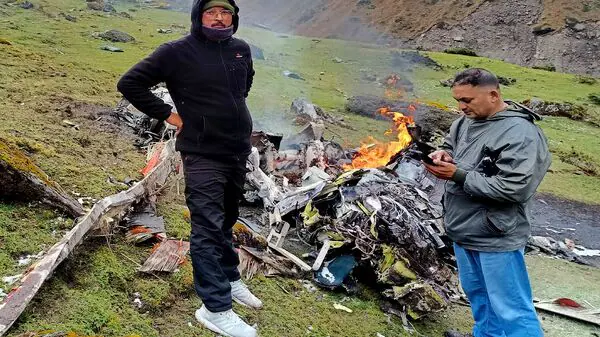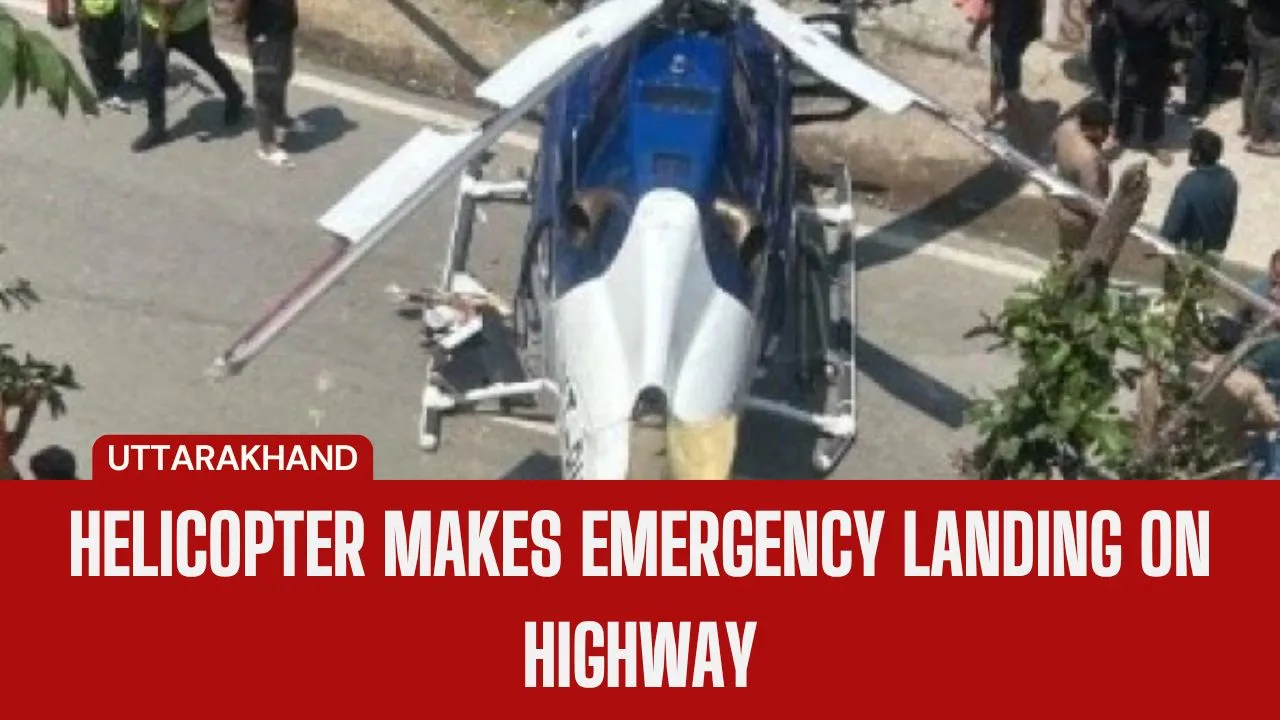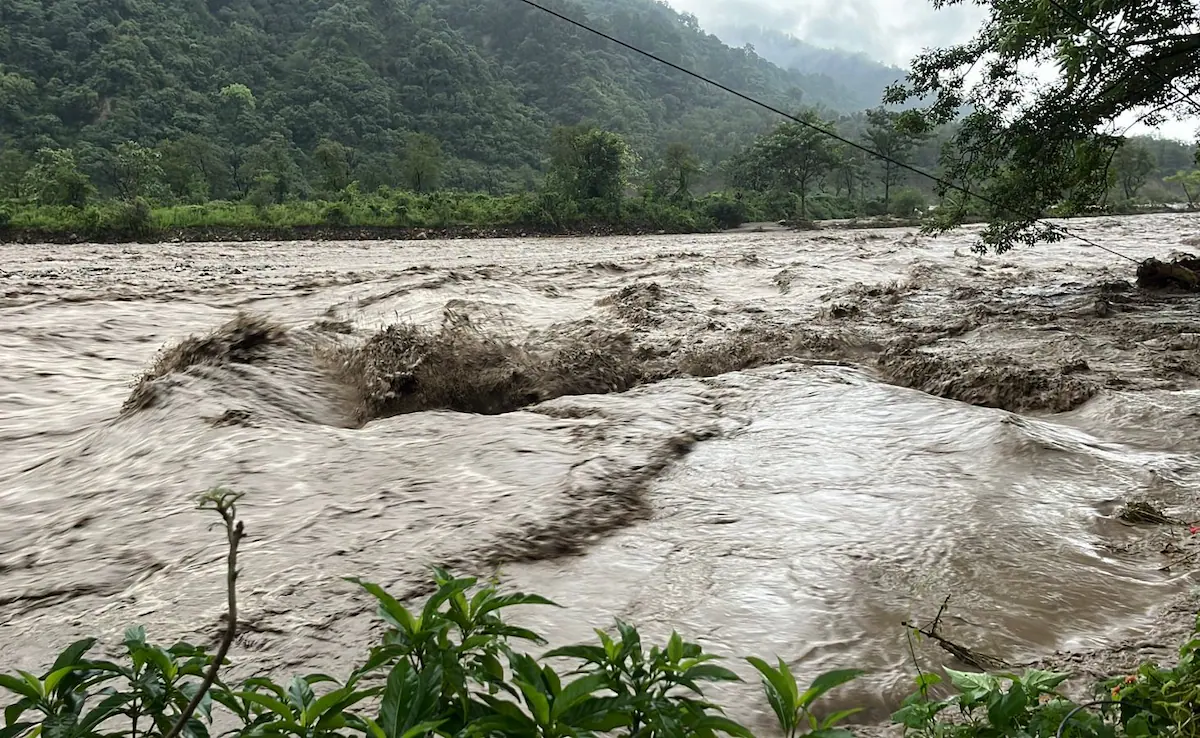Tragedy in the Himalayas: Kedarnath Helicopter Crash Claims 7 Lives Amid Harsh Weather
In a heartbreaking incident that shook the nation, a helicopter ferrying pilgrims from Kedarnath crashed early in the morning on June 15, 2025, claiming the lives of all seven passengers, including a 2-year-old child. This tragic event took place in the Sharav Valley, a remote mountainous region between Gaurikund and Trijuginarayan in Uttarakhand’s Rudraprayag district.
What Happened on June 15, 2025?
At approximately 5:20 a.m., a chopper operated by Aryan Aviation Pvt. Ltd. lost communication and tragically crashed en route from the Kedarnath shrine to Guptkashi. According to early reports from the Uttarakhand Civil Aviation Development Authority (UCADA) and local authorities, the flight encountered poor visibility and intense fog, which are believed to have contributed to the crash.
All seven individuals onboard—including five adult pilgrims, the pilot, and one toddler—were found dead at the crash site. The helicopter caught fire upon impact, reducing recovery chances to near zero. Rescue operations were launched promptly by SDRF and NDRF teams, but the difficult terrain significantly slowed down the process.
Victims Identified
As per official sources, the deceased included pilgrims from multiple states—Uttar Pradesh, Maharashtra, Gujarat, and Uttarakhand. The pilot was also identified as an experienced local flyer. The victims were on their return journey after visiting the Kedarnath temple, one of the most sacred sites in Hinduism and part of the revered Char Dham Yatra.
A Pattern of Concern
This crash is not an isolated incident. Over the past six weeks, there have been five reported aviation mishaps related to the Char Dham Yatra route. These include emergency landings, rotor malfunctions, and now this fatal crash. Aviation experts have been calling for a thorough investigation into the operational standards and weather monitoring systems used by charter companies in the region.
The Kedarnath route, while sacred and scenic, is fraught with weather unpredictability, narrow valleys, and limited landing zones. Pilots often have a small window for safe takeoff and landing, which becomes even more treacherous during monsoon and fog-prone months like June.
Government Response
Uttarakhand Chief Minister Pushkar Singh Dhami expressed deep grief over the incident. In a public statement, he promised that a high-level technical investigation would be launched to determine the exact cause of the crash. The CM also directed officials to suspend all helicopter services to Kedarnath until further safety audits are completed.
The Directorate General of Civil Aviation (DGCA) has been tasked with revisiting the Standard Operating Procedures (SOPs) for helicopter services operating in high-risk zones. This includes new weather thresholds, pilot training, and potential installation of real-time monitoring systems.
Voices from the Ground
Locals in the Rudraprayag district, many of whom rely on the tourism economy driven by the Char Dham Yatra, are in shock. “Every year we fear for something like this. Weather here changes within minutes, and sometimes the pressure to complete trips puts lives at risk,” said a local trek guide.
Survivors from earlier trips also raised concerns about flight scheduling under time pressure, lack of pre-flight briefings, and inadequate passenger insurance coverage—issues that now demand urgent attention.
The Road Ahead
This devastating crash is a somber reminder of the risks involved in pilgrimage travel to high-altitude locations. While faith drives millions to these sacred sites, the infrastructure and safety standards must be modernized to match the growing demand.
Authorities now face the dual challenge of ensuring safety and restoring public trust in helicopter services. In the coming weeks, expect new guidelines for weather checks, mandatory delay protocols, and possible technological upgrades in communication and navigation.
Conclusion
The Kedarnath helicopter crash on June 15, 2025, is not just a tragic loss of seven lives—it’s a wake-up call. High-altitude aviation, especially in pilgrimage zones, needs better oversight, modern infrastructure, and strict adherence to safety protocols. As the investigation unfolds, the hope is that real reforms will replace routine condolences.
Until then, the mountains of Uttarakhand mourn silently, echoing the cries of families left behind.









